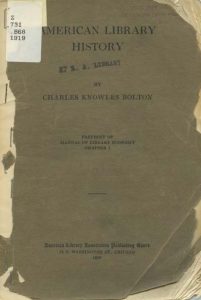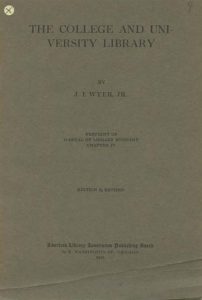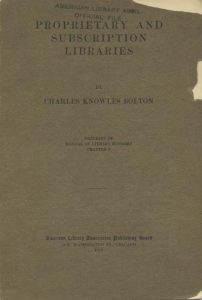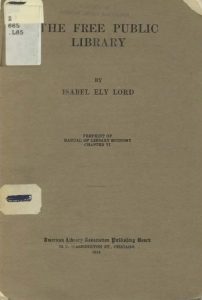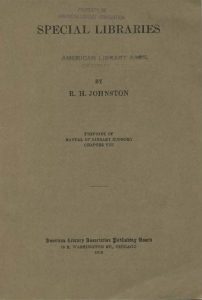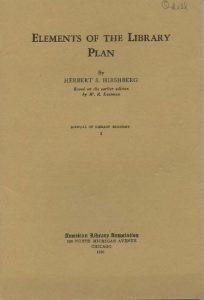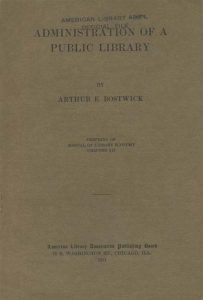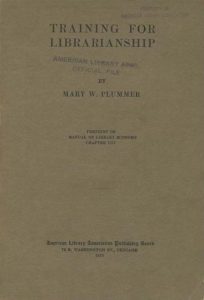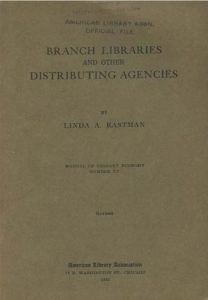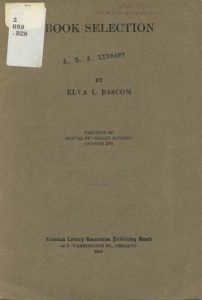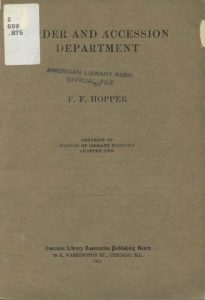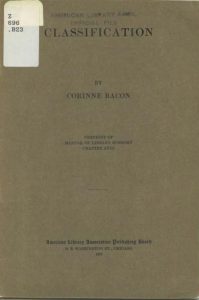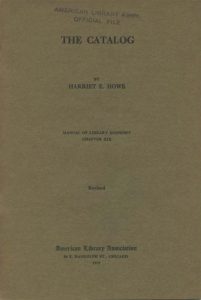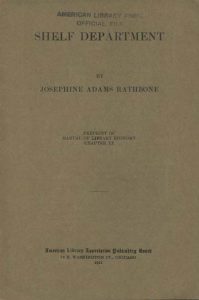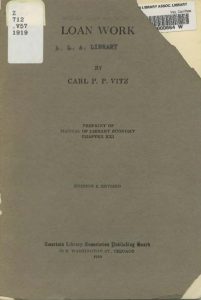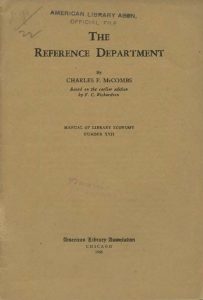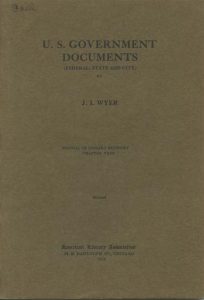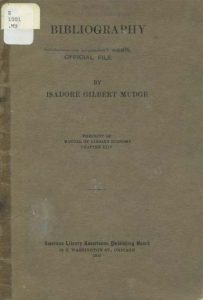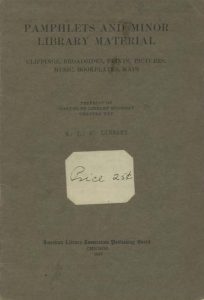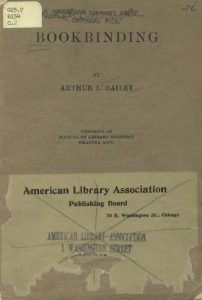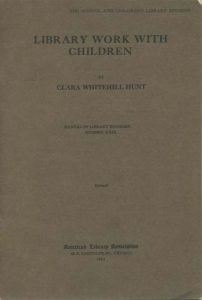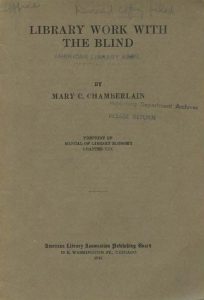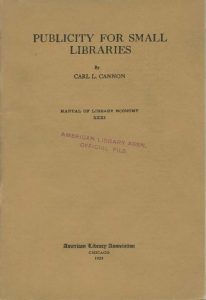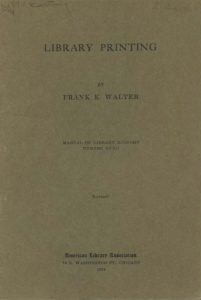From 1911 until 1930, the American Library Association produced a series of manuals about library administration and services known as the Manual of Library Economy. Each installment is rich in the experienced perspectives of library leaders of its time. Read on to learn more about Manual of Library Economy!
In American Library History, Boston Athenaeum librarian Charles Knowles Bolton describes the establishment of many early libraries and library collections in North America. In The College and University Library, New York State librarian J. I. Wyer Jr. defines the differences between college and university libraries, and the author describes the functions of each library department. In Proprietary and Subscription Libraries, Charles Knowles Bolton describes the history and administration of such libraries as well as their similarities with free public libraries. While in The Free Public Library, Isabel Ely Lord, of the Pratt Institute Free Library, describes the broadening functions of free public libraries.
In Special Libraries, Bureau of Railway Economics librarian R. H. Johnston describes the historical emergence of special libraries and their purposes. In Elements of the Library Plan, Herbert S. Hirshberg outlines the most important components of library building plan design. In Administration of a Public Library, St. Louis Public librarian Arthur E. Bostwick describes the administrative constraints of libraries in relationship with municipal and public control. While in Training for Librarianship, Library School of the New York Public Library principal Mary W. Plummer (A.L.A. President 1915-1916; A.L.A. Vice President, 1900-1911) describes the early history of library education programs in the United States.
In Branch Libraries and other Distributing Agencies, Cleveland Public librarian Linda A. Eastman (A.L.A. President 1928-1929) explains how library services have been brought to populations outside of urban city centers to reach more people. In Book Selection, Wisconsin Free Library Commission librarian Elva L. Bascom explains the principles and practice of book selection to meet the diverse needs of library community populations. In Order and Accession Department, Tacoma Public librarian Franklin F. Hopper describes the operations of library materials orders departments. While in Classification, Corinne Bacon, of the H. W. Wilson Company, explains the development and use of classification systems in libraries.
In The Catalog, Harriet E. Howe describes library catalogs and their use in libraries. In Shelf Department, Pratt Institute Library School vice director Josephine Adams Rathbone (A.L.A. President 1931-1932) explains shelf-lists, care of books on shelves, book-supports, labels, and inventory. In Loan Work, Cleveland Public librarian Carl P. Vitz describes different types of library loan systems with examples in New York and Illinois. While in The Reference Department, New York Public librarian Charles F. McCombs describes the different historical services of reference departments.
In U. S. Government Documents (Federal, State, and City), New York State librarian J. I. Wyer describes different types of government documents, as well as both their arrangement and cataloging. In Bibliography, Columbia University librarian Isadore Gilbert Mudge describes the types and uses of bibliographies in library work. In Pamphlets and Minor Library Material, readers can learn about the classification and cataloging of non-book collections in libraries. While in Bookbinding, Wilmington Institute Free librarian Arthur L. Bailey describes the materials and practices of bookbinding repair in libraries.
In Library Work with Children, Brooklyn Public librarian Clara Whitehill Hunt explains the planning and administration of libraries for children. In Library Work with the Blind, New York State librarian Mary C. Chamberlain writes the history library materials and services for blind people. In Publicity for Small Libraries, New York Public librarian Carl L. Cannon describes multiple types of publicity program options, including book lists, exhibits, library events, and newspapers. While in Library Printing, University of Minnesota librarian Frank K. Walter describes the elements of good printing, steps in producing printed materials, and costs too.
For over two decades, the Manual of Library Economy series continued for over thirty issues, published in multiple editions, and other publication series were produced alongside this series too. The early twentieth century saw a great expansion of A.L.A. publications guiding and supporting libraries and librarians across the country and the world.
Copies Available at Your ALA Archives
Physical copies of Manual of Library Economy publications are available for viewing at the ALA Archives. Please view the Record Series 13/10/3 database record entry, for more information.
Got Something to Donate to the Story So Far?
Many people have been involved in the long history of A.L.A. publications and library leadership. Do you have any information about early Manual of Library Economy participants, collaborators, publications, or beneficiaries? Please contact us through social media. We and our readers would like to read about it.
